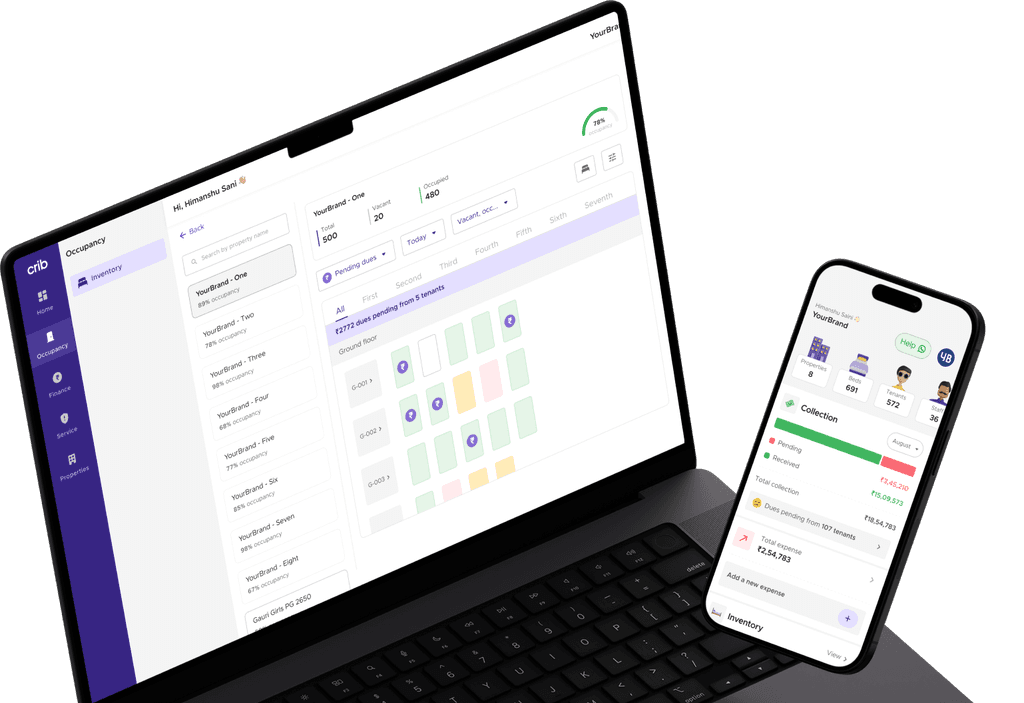Learn about common building repairs and maintenance, from routine tasks for safety to preventive measures that protect your property long-term.
Building repairs and maintenance are crucial aspects of property ownership and management. Regular upkeep not only preserves the structural integrity and aesthetic appeal of a building but also ensures the safety and comfort of its occupants.
From minor fixes to major renovations, a wide range of services falls under the umbrella of building repairs and maintenance. These can include plumbing repairs, electrical work, roof maintenance, and structural inspections.
By addressing these issues promptly, you can prevent larger, more expensive problems down the line and create a space where tenants feel comfortable and secure.
In this guide, we'll walk through the most common types of building repairs and maintenance services, helping you stay on top of essential upkeep for your rental properties.
Routine Repair and Maintenance Work

Routine maintenance is the backbone of a well-managed property. It involves regularly scheduled tasks that keep your building in good shape and prevent minor issues from turning into major problems.
For rental properties, these routine checks help ensure everything is running smoothly for your tenants, reducing the chances of unexpected repairs that can disrupt their day-to-day lives.
Some common types of routine maintenance include:
Plumbing checks: Inspecting pipes, faucets, and drains for leaks or blockages can help prevent water damage.
Heating and cooling system upkeep: Servicing HVAC units regularly to maintain efficiency and control energy costs.
Window and door inspections: Ensuring seals are intact and locks function properly to maintain security and energy efficiency.
Routine repairs can also involve minor, everyday fixes, such as replacing doorknobs, checking jammed doors, swapping out floorboards, changing burned-out light bulbs, or fixing locks that are difficult to operate.
By adhering to a regular maintenance schedule, you’ll extend the lifespan of your building’s key systems and create a safer, more comfortable living space for your tenants.
Maintenance of Electrical Installations

Electrical systems are the heart of any building, and keeping them in good working order is crucial for the safety and convenience of your tenants. Poorly maintained electrical installations can lead to power outages, equipment failure, or even dangerous situations like electrical fires.
Importance of Licensed Personnel
Electrical installations and repairs should always be carried out by certified electricians. Licensed professionals not only have the expertise to do the job right but also ensure that everything is up to code. This significantly minimises the risk of hazards. Whether it’s wiring a new appliance or conducting routine checks, relying on skilled personnel ensures the work is done safely, efficiently, and in compliance with all regulations
Recommended Intervals for Electrical Tests
To maintain the safety and efficiency of your electrical systems, you should follow specific testing intervals:
Earthing test: Once a year or once every two years to ensure the building’s electrical systems are safely grounded, preventing shock hazards.
Insulation test: Twice a year to check the integrity of wiring and insulation to help avoid potential short circuits or fires.
Polarity test: Every five years to ensure correct wiring polarity to help reduce the risk of equipment damage and safety hazards.
Preventive Maintenance
Preventive maintenance is all about identifying and addressing potential issues before they become serious problems. These tasks are carried out based on regular inspection surveys.
Some common preventive maintenance tasks include:
Pest control: Regular treatments to keep insects and rodents from causing damage.
Roof and gutter inspections: Checking for cracks, missing shingles, or leaks to prevent water damage.
Fixing small cracks: Patching up minor cracks in ceilings or drywall before they spread.
Testing safety systems: Regularly testing fire alarms, extinguishers, and sprinkler systems to ensure they work properly in case of emergencies.
Protective Maintenance
Protective maintenance plays a crucial role in preserving the structural integrity of a building. While some areas may seem like they only need a quick cleanup or a fresh coat of paint, certain surfaces require more than just aesthetic care to stay in top condition.
Protecting Surfaces
Exposed surfaces, such as steel staircases, entrance walkways, and awnings, are constantly subjected to weather and daily wear. These areas need proper protective coatings to guard against rust, corrosion, and general deterioration.
Structural Component Maintenance
Structural elements like beams and pillars are essential to the stability of any building. Applying protective coatings shields them from damage caused by moisture, weather, or even accidental impacts, preserving their strength and extending their lifespan.
Additions and Alterations
Changes to a property are sometimes needed to enhance its functional efficiency. Additions and alterations aim to make the space work better for tenants, improving both convenience and usability.
For example, a common addition might be creating a shared lounge area in a student housing building, giving tenants a space to relax and socialise. Or adding extra storage units in apartment complexes, providing tenants with more space to store their belongings.
These updates not only make the property more efficient but also increase tenant satisfaction. They help your property stay modern, functional, and desirable for both current and future tenants.
Annual Repairs

Your property has a long life ahead of it, and annual repairs are the secret ingredient to making sure it stays that way. These yearly repairs focus on addressing the wear and tear that naturally occurs over time.
Common annual repairs include whitewashing, distempering, repainting, and cleaning water tanks or drainage lines to ensure hygiene and prevent buildup.
Maintenance Management with Crib

Keeping up with building repairs and maintenance is a breeze with Crib, simplifying every step of the process.
Tenants can quickly submit service requests through the app, complete with photos and notes. No more back-and-forth!
With everything in one place, you can address issues faster and keep your property running smoothly. Plus, Crib’s automated tracking ensures no request slips through the cracks, keeping your tenants happy and your maintenance routine on point.
Quick fixes, happy tenants, and a smoothly managed property—book a demo to see what else Crib can do!


























































































































































































